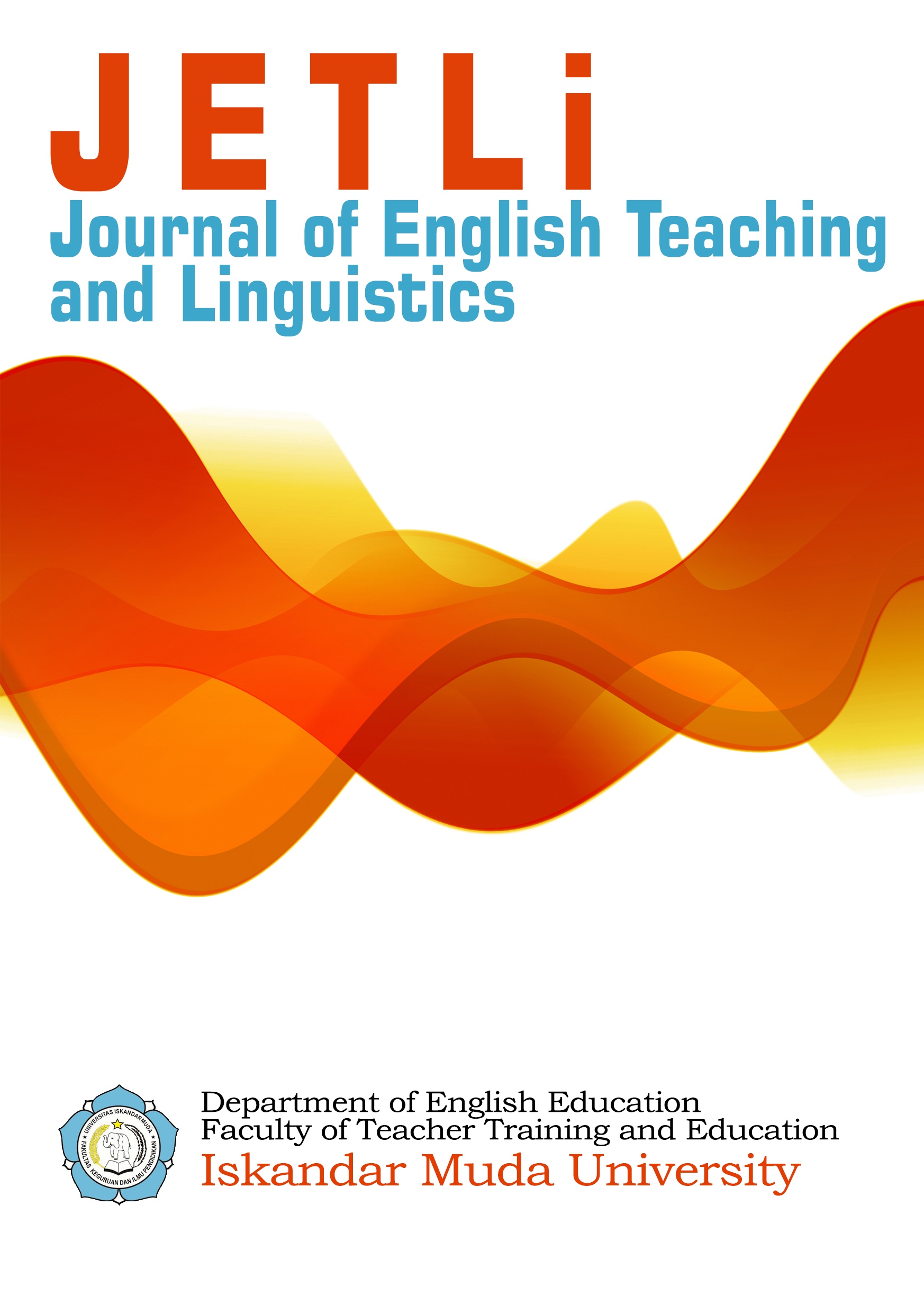Digital-Based Synergy of Campus Communities and Students in Efforts to Prevent Sexual Harassment in The Higher Educational Environment
DOI:
https://doi.org/10.55616/jetli.v5i2.852Keywords:
Campus community, Sexual harassmentAbstract
Sexual violence is defined as any act that, as a result of power dynamics or gender relations, degrades, harasses, or attacks a person's body, causing or possibly causing psychological or physical suffering, as well as interfering with and preventing them from safely and effectively pursuing higher education. Anywhere can experience sexual violence, including on campus. When technology is misused, as in the instance of sexual harassment, a person's ignorance of its use might have detrimental effects. This study combined a qualitative approach with a library research methodology, whereby data was collected from books, journals, and other reading materials, and conclusions and suggestions were drawn in response to the issues found. When it comes to sexual harassment on campus, the researchers found that some incidents happened in locations that students don't often visit—namely, the library room—because there are so many online resources available for information. As a result, the researchers reached conclusions and recommendations regarding how to stop sexual harassment in higher education. They suggested creating online action in the form of slogans and posters that are shared by colleges, students, and the campus community through social media platforms already in place, as well as providing a platform or facility like a Counseling Service Unit related to sexual violence as a form of complaint to the Integrated Service Unit.
References
Anam, et al., (2022). Hukuman Bagi Pelaku Tindak Pidana Kekerasan Seksual Di Kampus Dalam Perspektif Hukum Positif Dan Hukum Islam. Ma’mal: Jurnal Laboratorium Syariah Dan Hukum, 3(6), 549–570. https://doi.org/10.15642/mal.v3i6.153
Ashrof, et al., (2020). “Konsep Pemikiran Pendidikaan Akhlak” (Studi Komparasi Menuru T K.H Hasyim Asy’Ari Dan K.H Ahma D Dahlan)
Binder, R., Garcia, P., Johnson, B., Fuentes-Afflick, E. Sexual Harassment in Medical Schools: The Challenge of Covert Retaliation as a Barrier to Reporting. Acad Med. 2018 Dec;93(12):1770-1773
Blumell, L. E., & Mulupi, D. (2023). The Impact of Anti-Sexual Harassment Policies on Sexual Harassment Prevention in the Workplace. Employee Responsibilities and Rights Journal, 1–22. https://doi.org/10.1007/s10672-023-09487-w
Bondestam, F., & Lundqvist, M. (2020). Sexual harassment in higher education–a systematic review. European Journal of Higher Education, 10(4), 397–419. https://doi.org/10.1080/21568235.2020.1729833
Crusto, C. A., Hooper, L. M., & Arora, I. S. (2024). Preventing Sexual Harassment in Higher Education: A Framework for Prevention Science Program Development. Journal of Prevention, 45(4), 501–520. https://doi.org/10.1007/s10935-024-00780-4
Ferdiana, R. (2023). Literasi digital: sinergitas tni, polri dan akademisi pada kajian pengabdian kepada masyarakat dari perspektif remaja milenial sebagai pengguna media sosial dalam pandangan hukum di sma 1 mancak kabupaten serang. 136–145
Khan, A. Y., Ida, R., Aslam, J., & Emeraldien, F. Z. (2022). Sexual Harassment: A barrier to Girls Education. Indonesian Journal Of Educational Research and Review, 5(3), 429–437. https://doi.org/10.23887/ijerr.v5i3.54353
Laksana, A., Fitrianti, R., & Humadi, A. (2022). Sosialisasi pengembangan media dalam pemanfaatan tv digital di desa banyumas. Jurnal Ilmiah Pengabdian Kepada Masyarakat, 1(3), 153–158
Mahuda, I., & Kusuma, J. W. (2020). Pendampingan pengisian sensus penduduk online melalui Sahabat Sensus di Provinsi Banten. Jurnal Pemberdayaan Masyarakat Berkarakter, 3(2), 287–398
Mansour, C., Tamirisa, K.P., Lundberg, G., Sharma, G., Mehta, L.S., Mehran, R., Volgman, A.S., Parwani, P. Sexual Harassment, Victim Blaming, and the Potential Impact on Women in Cardiology. JACC Case Rep. 2021 Jun;3(6):978-981
Mardiana, et al., (2022). Literasi Digital dalam Upaya Mendukung Pembelajaran Online pada Siswa Sekolah Dasar di Kota Cilegon. Kaibon Abhinaya?: Jurnal Pengabdian Masyarakat, 4(1), 47–54. https://doi.org/10.30656/ka.v4i1.3809
Pujiana, D., & Lestari, M. (2017). Hubungan antara Kualitas Tidur dengan Konsentrasi Belajar Mahasiswa/i Program Studi Ilmu Keperawatan (PSIK) Semester VI STIKES Muhammadiyah Palembang. Jurnal Masker Medika, 5(1), 315–325. http://jmm.ikestmp.ac.id/index.php/maskermedika/article/view/169
Rahman, N. A., & Putra, E. V. (2021). Dinamika sosial komunitas Motor Vixion YVCI di Kota Sungai Penuh (studi fenomenologi: komunitas di Jalan Muradi Kecamatan Pesisir Bukit Kota Sungai Penuh Kabupaten Kerinci). Jurnal Perspektif: Jurnal Kajian Sosiologi Dan Pendidikan, 4(1), 28–38
Ramadiani, et al., (2022). Pelibatan Mahasiswa dalam Advokasi Kebijakan Pencegahan dan Penanggulangan Kekerasan Seksual Pendidikan Tinggi di Indonesia. Seminar Nasional Pengabdian Masyarakat LPPM UMJ, 4. http://jurnal.umj.ac.id/index.php/semnaskat
Ritonga, R. S., & Munisa, M. (2022). Pemahaman Pendidikan Seks Usia Dini Pada Orangtua Untuk Mencegah Sexual Abuse Anak Usia Dini. Majalah Ilmiah Warta Dharmawangsa, 16(3), 603–612. https://doi.org/10.46576/wdw.v16i3.2251
Safitri, A., Asis, A., & Azisa, N. (2023). Perlindungan Hukum Bagi Korban Kekerasan Seksual di Perguruan Tinggi. Al-Mizan, 19(1), 121–144. https://doi.org/10.30603/am.v19i1.3626
Published
How to Cite
Issue
Section

This work is licensed under a Creative Commons Attribution 4.0 International License.
Authors retain copyright and grant the journal right of first publication with the work simultaneously licensed under an Attribution 4.0 International (CC BY 4.0) that allows others to share — copy and redistribute the material in any medium or format and adapt — remix, transform, and build upon the material for any purpose, even commercially with an acknowledgment of the work's authorship and initial publication in this journal.







 Journal of English Teaching and Linguistics
Journal of English Teaching and Linguistics